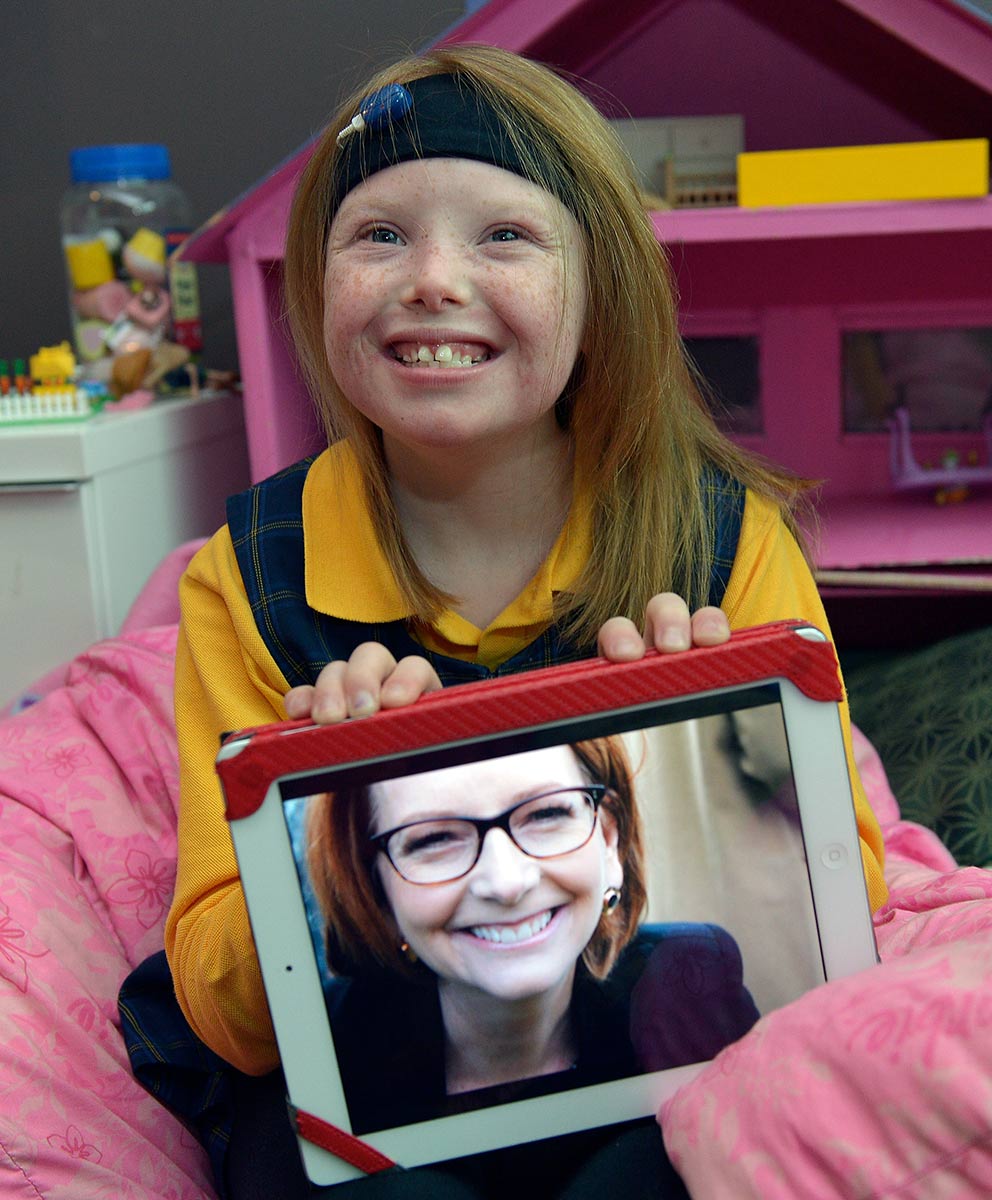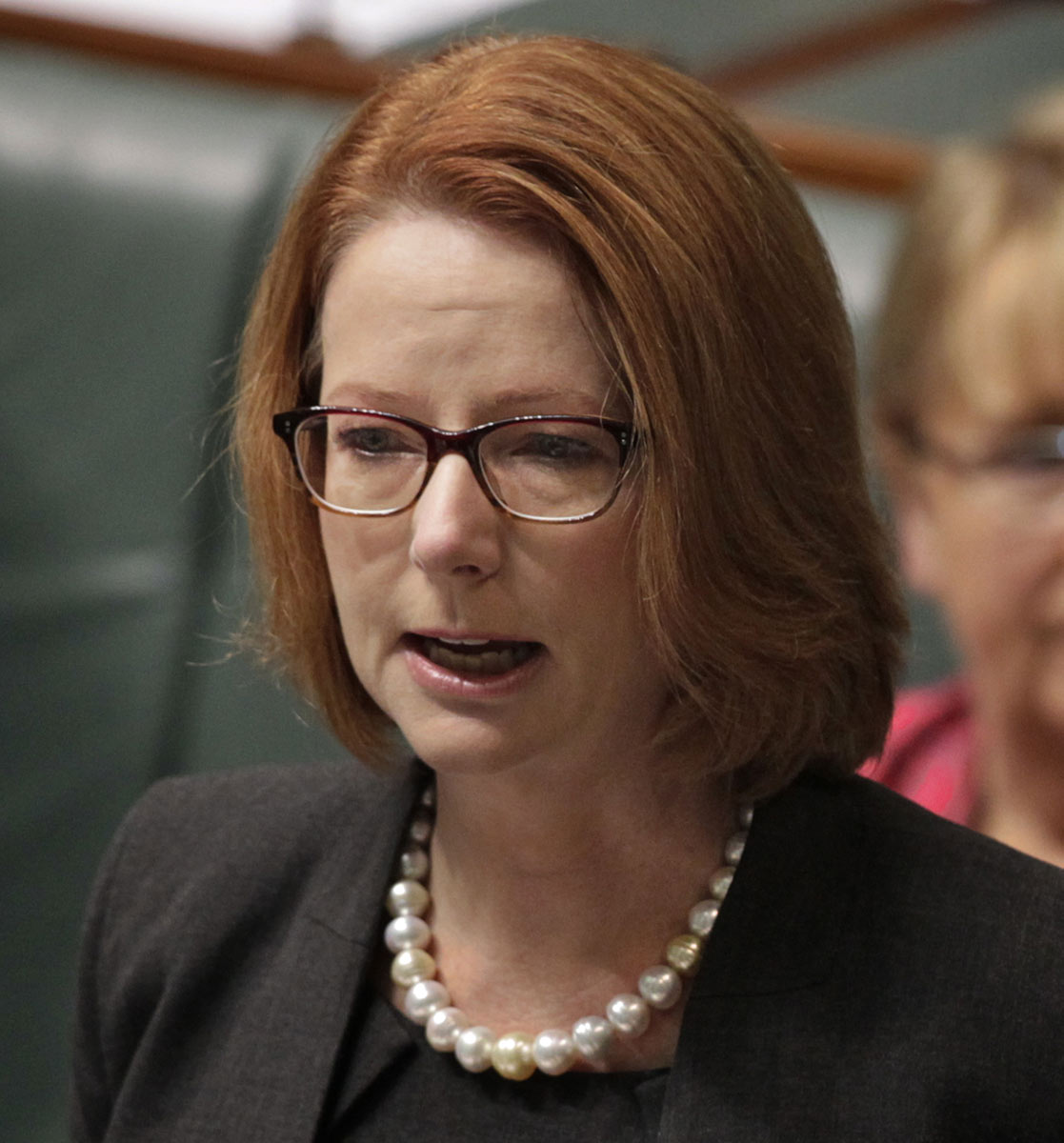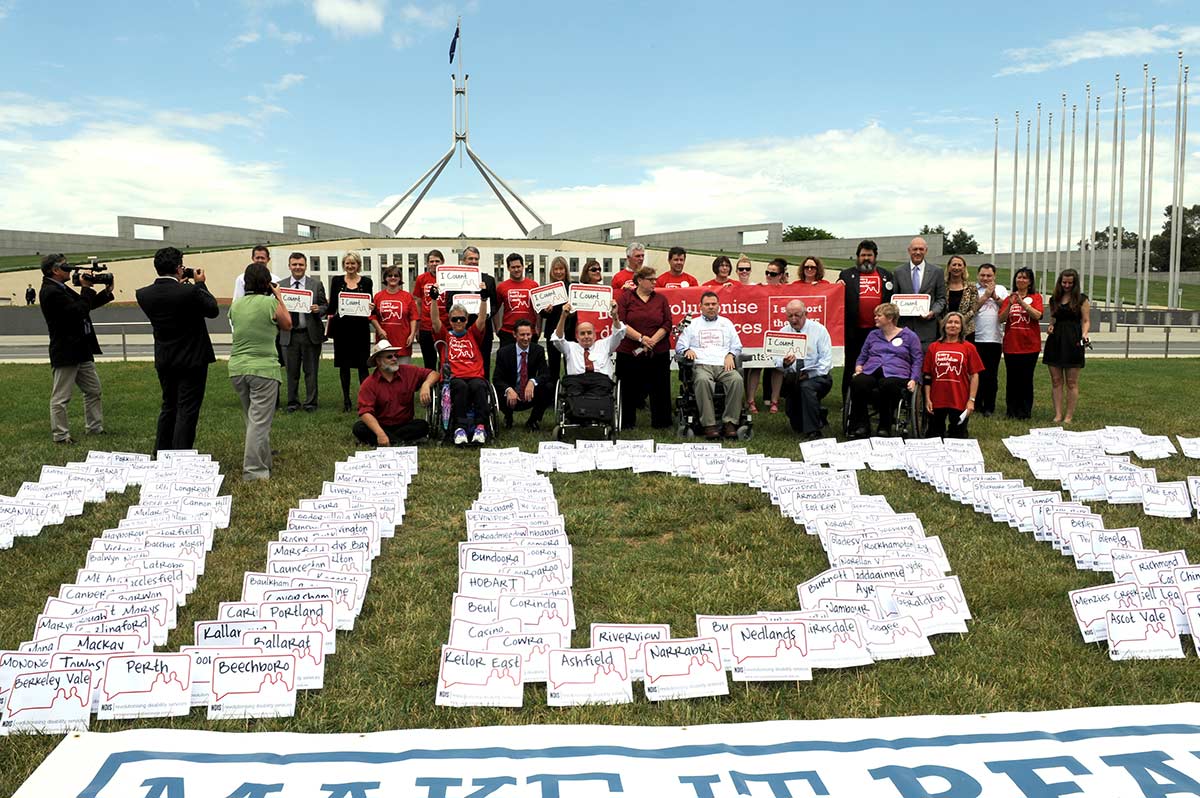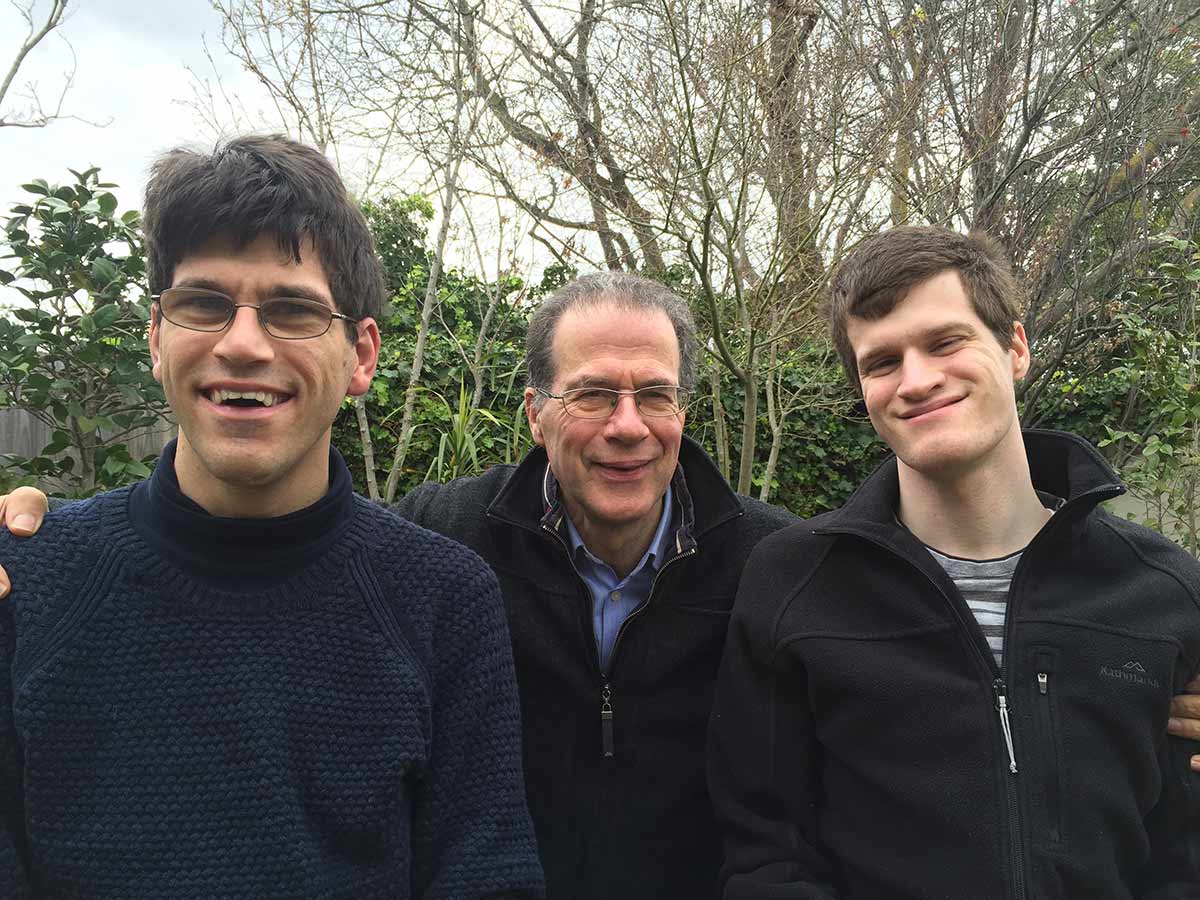The National Disability Insurance Scheme (NDIS) provides needs-based support to Australians who have a permanent and significant disability.
This is not insurance that individuals buy. Rather, because anyone may be born with or develop disability, the NDIS spreads the cost of supporting the independence and social and economic participation of people with disability across the whole community.
Prime Minister Julia Gillard, speaking for the National Disability Insurance Scheme Bill, House of Representatives, 29 November 2012:
Disability can affect any of us and therefore it affects all of us … The existence of disability in our community cannot always be avoided. But the consequences of disability – isolation, poverty, loss of dignity, stress, hopelessness and fear of the future – can be avoided … The National Disability Insurance Scheme is the greatest change to Australian social policy in a generation and a mark of how deeply the conscience of our nation has been touched.
Universal scheme for people with disabilities
Universal insurance schemes have been around for a long time, in the form of workers’ compensation and third-party insurance for those injured in vehicle accidents.
The Whitlam government (1972–75) introduced universal health insurance (Medibank, now Medicare) and considered a similar scheme to cover people with disabilities. The government fell before this could be achieved and Malcom Fraser’s new Liberal government let it lapse.
Many people helped revive the idea. Melbourne economist Bruce Bonyhady was drawn into disability advocacy by his experiences as father to two boys with cerebral palsy. In 2005, as chairman of disability aid group Yooralla, he realised that the current patchwork system simply did not provide enough resources to meet people’s needs.
Bonyhady spoke to Brian Howe, a minister in the Hawke–Keating government in the 1980s and 1990s. Howe’s advice was that he had to stop thinking about disability policy as ‘welfare’, and instead think of it as ‘risk and insurance and investment’. For Bonyhady it was the lightbulb moment.
Bonyhady then consulted John Walsh, an actuary who became a quadriplegic after being injured playing rugby. An expert on workers’ compensation and motor accident insurance schemes, Walsh did more than anyone to estimate the actual costs of supporting people with disability in Australia and to design the NDIS.
Winning support
With Helen Sykes, Chair of the James Macready-Bryan Foundation, Bonyhady made a submission to Prime Minister Kevin Rudd’s Australia 2020 Summit, held in Canberra in April 2008.
Their submission was one of the ‘Big Ideas’ at the summit. As several bodies and the Disability Investment Group along with the ‘Shut Out’ Reports supported the call for such a scheme, the government asked the Productivity Commission to report on possible approaches.
In 2011 the Productivity Commission reported the system was ‘underfunded, unfair, fragmented, and inefficient’. The report – one of whose authors was John Walsh – supported the call for a National Disability Insurance Scheme. The aim was to provide ‘insurance cover for all Australians in the event of significant disability’. To achieve this, disability funding would need to double.
The Labor government took up the report’s recommendations. Key figures were Jenny Macklin, Minister for Disability Reform, and Bill Shorten, a former Parliamentary Secretary for Disabilities and Children’s Services.
Prime Minister Julia Gillard, who had replaced Rudd in June 2010, was a strong supporter. At the same time, a huge alliance of disability and carers groups came together through Every Australian Counts, to lobby for the plan.

Establishment of the NDIS
The National Disability Insurance Scheme Act (NDIS Act) was passed in May 2013. It had bipartisan support.
Introducing the NDIS, Prime Minister Gillard said:
The risk of disability is universal, so our response must be universal.
Opposition Leader Tony Abbott had earlier told disability advocate Rhonda Galbally, ‘Normally I’m Mr No, but on this occasion I’m Mr Yes!’ Galbally had contracted polio as a baby.
The NDIS Act came into effect on 1 July 2013, but it took seven years for the scheme to be fully implemented. Trials began almost immediately in parts of four states and the Australian Capital Territory.
A year on, more than 7,000 care plans had been set up for individuals with disabilities. The NDIS began to roll out nationally in mid-2016. The last state to join was Western Australia in 2018.
The NDIS covers all Australian residents who are born with or acquire a significant and permanent disability before age 65. Disabilities may be physical, intellectual, sensory, cognitive or psychosocial.
NDIS funding is intended to provide nationally consistent support that enhances independence and fosters inclusion.

How does the NDIS work?
The scheme does not pay basic living expenses, apart from those directly connected with the disability. It provides disability-related equipment and assistance with daily living activities and access to the community. Services and equipment can also be used to help reduce disability in the future.
NDIS funding aims to help recipients improve their wellbeing, find a place to live, get a job, improve their education and develop good relationships.
There is no set budget for support. Each recipient has an individual plan, based on their needs. Within the limits set by the plan, the recipient is in control of expenditure.
By 2023 more than 500,000 Australian residents were receiving NDIS support, more than 300,000 for the first time. Total payments to recipients in 2023–24 was $41.8 billion.
Kurt Fearnley, chair of the National Disability Insurance Agency (NDIA) board, reported improvements in social and community participation, including employment, and an increase in the number of First Nations people receiving support for the first time. Yet, despite these outcomes, he also recognised that ‘genuine reform’ was required to ‘ensure the NDIS works for all participants’.
NDIS review
The NDIS has been criticised for being hard to access and difficult to navigate.
The Final Report of the Independent Review of the National Disability Insurance Scheme was released in December 2023. It looked at ways to improve the experience of participants in the scheme and their outcomes. It also aims to make sure the scheme is sustainable in years to come.
While there was no formal government response in the first 18 months after the release of the final report, changes were made to NDIS legislation to address some of the review’s recommendations. The National Disability Insurance Scheme Amendment (Getting the NDIS Back on Track No. 1) Act 2024 commenced on 3 October 2024. Through a raft of reforms, including a definition of NDIS supports, the act endeavoured to deliver a fairer, more consistent and sustainable scheme.
Explore Defining Moments
References
National Disability Insurance Scheme Act 2013 (Cth) on the Federal Register of Legislation
National Disability Insurance Scheme on the National Disability Insurance Agency website
National Disability Insurance Scheme: A quick guide, Australian Parliament website
NDIS Annual Report 2019–20, Canberra, September 2020. This and other reports can be downloaded from the NDIS publications webpage.
Productivity Commission Inquiry Report, Disability Care and Support: Overview and Recommendations (PC report 54, 2011), Commonwealth of Australia, Canberra, July 2011. This and the full two-volume report can be downloaded from the Productivity Commission's inquiry report webpage.

